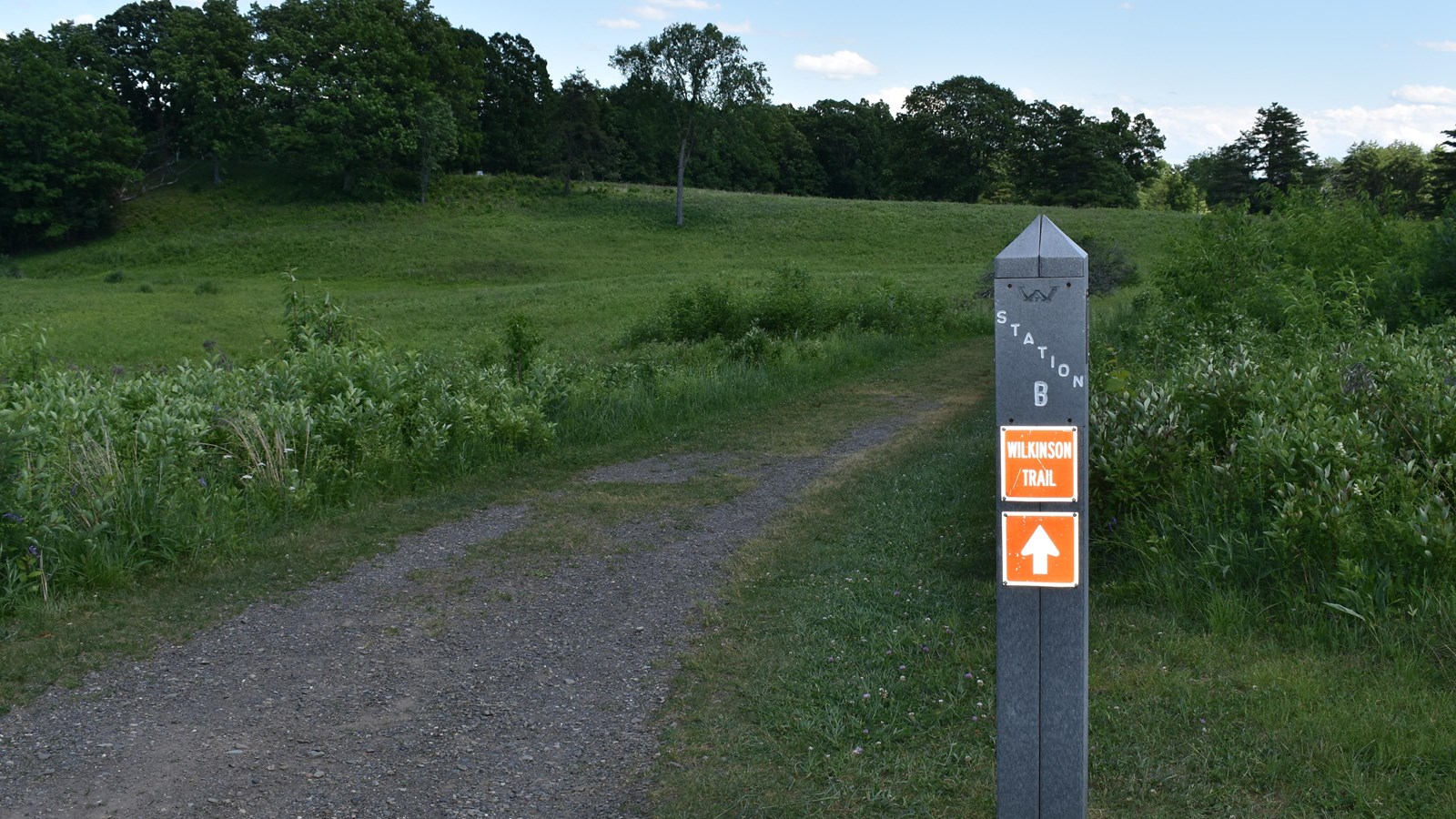Last updated: September 26, 2022
Place
Station B, Part II

NPS
"The day after our late engagement, I had as unpleasant a duty as can fall the lot of an officer, the command of the party sent out to bury the dead and bring in the wounded.... I, however, observed a little more decency than some parties had done, who left heads, legs and arms above ground. No other distinction is paid to officer or soldier than the officers are put in a hole by themselves. This friendly office to the dead, though it greatly affects the feelings, was nothing to the scene in bringing in the wounded; the one were past all pain, the other in the most excruciating torments, sending forth dreadful groans. They had remained out all night...some of them begged they might lie and die, others again were insensible, some upon the least movement were put in the most horrid tortures, and all had near a mile to be conveyed to the hospitals. These poor creatures, perishing with cold and weltering in their blood, displayed such a scene, it must be a heart of adamant that could not be affected by it, even to a degree of weakness."
–Ensign Thomas Anbury,
24th Regiment of Foot
The outcome of the second battle of Saratoga, October 7th, 1777, initiated the events which led to the capture of General Burgoyne's army.
On October 8th, after burying General Fraser in a solemn ceremony, Burgoyne had little choice but to withdraw. A chilly, slow, soaking autumn rain turned the road to ankle-deep mud, and made the march even more of an ordeal for the dispirited army. Tired, cold and hungry from the grueling battles, they marched north.
Eight miles north, in the Village of Saratoga, the British burned the country estate of American General Philip Schuyler to the ground in hopes of denying the pursuing Americans additional cover. About three-fourths of a mile west of there, they encamped on a hill and were surrounded by American forces and a full-scale siege of the British forces' positions began. Starving, outnumbered almost three to one, and with no hope of escape, the British surrendered to the Americans on October 17th, 1777.
The British plan, meant to bring a decisive end to the Revolution and the war, instead resulted in France joining the side of the United States against England in 1778. France was joined by Spain in 1779, and the English declared war on the Netherlands in 1780, thus turning the revolution into an international conflict, one that continued for another 6 years and became a war of attrition for the British.
This foreign support helped guarantee the independence of the United States, and established the Battles of Saratoga as the turning point of the American Revolution.
To learn more about the week-long siege on the British and the surrender that followed, be sure to visit Victory Woods, 8 miles north of the Battlefield, to explore the scenes of that turbulent time. Victory Woods is accessible from behind Saratoga Monument, in the Village of Victory. In the summer months, make sure to visit and climb Saratoga Monument, located on Burgoyne Road in the Village of Victory, featuring fantastic views of the surrounding area and dramatized images of the American Revolution. The Monument is located on part of the grounds of Burgoyne's last camp.
Also, tour General Philip Schuyler's country house, a center of commerce and a political way-station, which was visited by important figures like George Washington, Thomas Jefferson, and James Madison. Philip Schuyler is perhaps the most famous American you’ve never heard of. He not only contributed to the success of the Battles of Saratoga, but was also instrumental in New York politics and was in many ways the father of the American canal system. Schuyler House is located on Rt. 4 in the Village of Schuylerville. All three sights are located within one mile of each other.
As you return to the Visitor Center, take time out to explore the stories of the men, women and children of the Revolution. Speak with Park Rangers, read first-hand accounts, and explore the museum and the rest of this historic site. Be inspired by your journey, always remembering the great human cost of the freedoms that American citizens enjoy today.
"The field of Saratoga is rich with the blood of heroes. What are the few names we have recorded compared with the unnumbered hosts who lie under the placid hills of the Hudson --or who performed upon this field unnoticed deeds of valor, and passed through life unregarded and unmade!"
–Ellen Hardin Walworth,
Saratoga Monument Association, 1891
From this point you can follow the trail back to the Visitors Center where we invite you to view our movie, fiber optic map, and exhibits. Make sure to pick up a copy of the annual Calendar of Events to learn more about upcoming “living history” programs, nature walks, and ranger presentations. Please also enjoy our 10-mile auto and cycling tour road where you can learn more about events that unfolded here at Saratoga National Historical Park.
